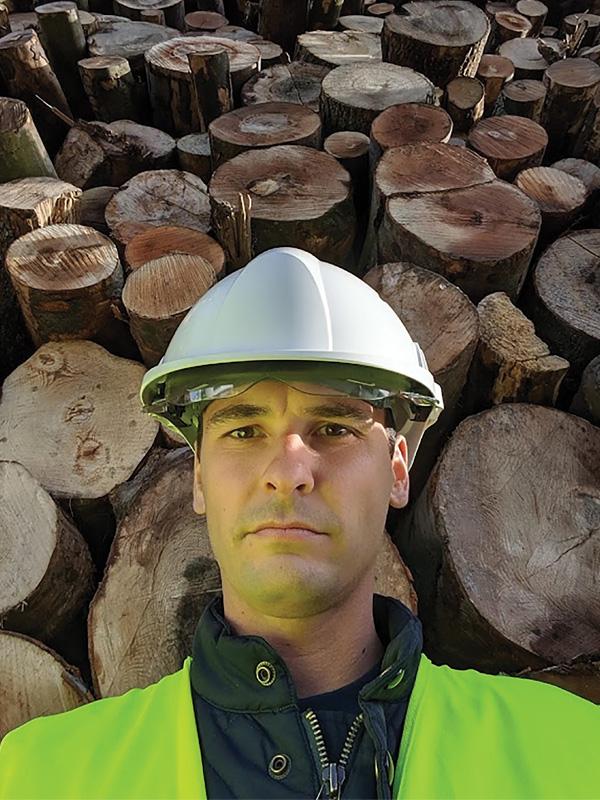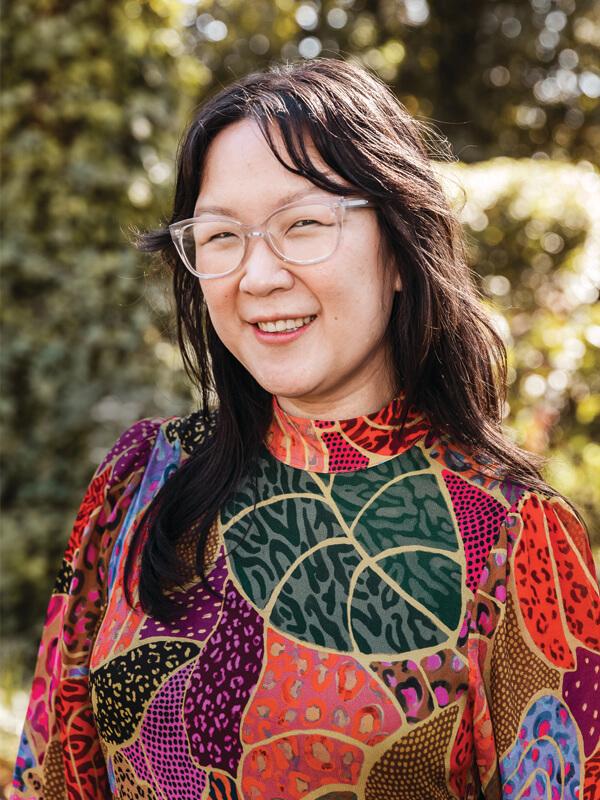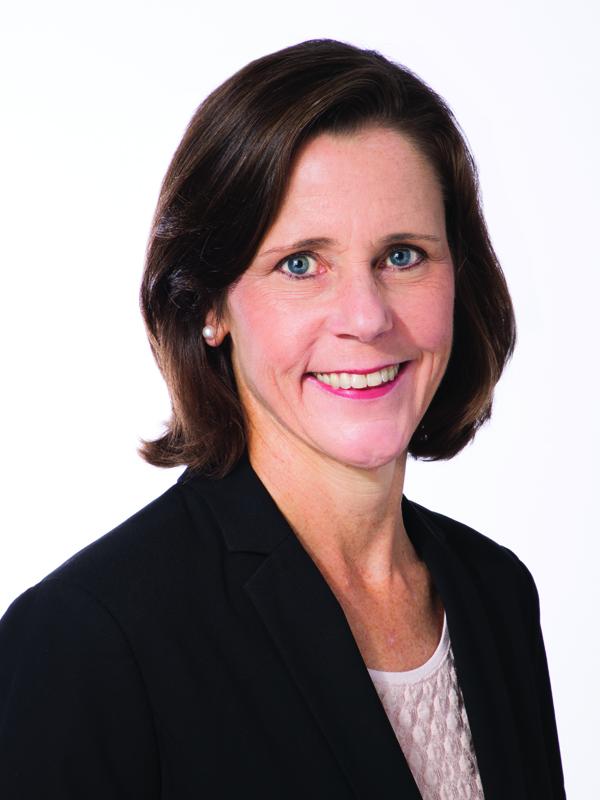
The Great Supply Chain Disruption
How can companies begin to address bottlenecks, high materials prices, and product shortages? Tuck alumni have some ideas.
By Betsy Vereckey
Feb 17, 2022

Before the pandemic arrived, many of us hardly thought about how our everyday products are sourced: where the chips in our cellphones come from, who made the paper we take notes on, how the vodka arrives in our cocktails. Now, however, it’s impossible to turn on the news, the local news radio station, or click “Continue to checkout” without being faced with the reality of what is being called The Great Supply Chain Disruption. Today we are painfully aware of all the work that must go on behind the scenes to get products from the manufacturing facility to the mall.
Take Allbirds sneakers, which prides itself on providing a sustainable product to consumers. As the company’s Associate Director of Sourcing and Ops Strategy Alex Jenny D’10, T’16 reminds us: retailers’ supply chains are extraordinarily complex.
“In our wool supply chain, for example, the product starts with a farmer, and then goes to a warehouse or aggregator. From there, it’s shipped to someone who cleans the wool. Then it’s spun into yarn, and then someone else knits it into fabric, which is assembled to the shoes. That’s a lot of work that goes into just one component,” Jenny says.
One hiccup in any part of this process can have a drastic ripple effect that extends throughout the entire supply chain. That’s why plenty of businesses are taking a second look at their operations to see what improvements can be made. They’re also having to manage product delays, rising raw material costs, and inflation that’s rising at its fastest pace in three decades.
Manufacturing, construction, and retail have all been hit especially hard. A semiconductor chip shortage has car companies cutting their production estimates. Construction companies are having to tell their customers that they’ll be paying more for lumber, wallboard, and roofing because they don’t have an ample supply of materials. Shipping ports remain congested, and delivery companies are operating at maximum capacity. Challenges like these are so severe that the government has established a Supply Chain Disruption Task Force to help identify, address, and solve some of these thorny bottlenecks.
When will life go back to normal? Some Tuck alumni predict that it could take another year, and a recent McKinsey Global Institute report predicted that most companies could expect major supply chain disruptions every 3.7 years.
Says Jenny, “I think the disruption will continue through next year, but so much depends on how particular regions, countries, and even individual companies handle the constantly evolving pan-demic. I’d say, ‘Get ready for more uncertainty.’”
Fortunately, Tuck alumni know how to handle uncertainty. Those immersed in the thick of the supply chain are making smart, informed decisions, based on what they learned as students. Tuck’s rigorous general management curriculum, alongside courses in operations, negotiations and marketing, have helped them pivot, block, tackle, and innovate as needed.
While no one likes the idea of a mangled supply chain, alumni say that their companies are using it as a chance to streamline their production chain. That means reducing the number of suppliers they work with so that they’re not straddled all over the world and digitizing product development to avoid the cumbersome process of physically shipping products to and from Asia. It also means re-designing the returns process to account for a boost in e-commerce; using robots as stand-ins for humans to make distribution centers safer and more efficient; and employing autonomous vehicles to enable last-mile delivery so that consumers get their orders right on time.
Here, we share the stories of Tuck alumni who are working in tech, retail, and manufacturing and are on the front lines of the Great Supply Chain Disruption. Read on to learn how they’re managing disruption and what their predictions are for when the world may look a little more normal. (Spoiler alert: It might be a while...)

Everything that goes into VF's supply chain:
“If you think about the full scope of supply chain and all the steps it takes to bring a product to market, we plan, create, make, move, and sell to consumers. COVID has impacted every single one of those steps in some way. It's been a perfect storm of disruption across the supply chain.”
Prediction:
“I think it's going to take nine to twelve months to work through the challenges that we’re facing now and get back to some semblance of normal. There’s been such a backup in so many different areas, but companies are coming up with creative solutions to mitigate these issues. Walmart chartered its own ships from Asia to secure ocean shipping capacity. We’re looking into chartering planes to ensure our brands’ key products will be in the hands of consumers this holiday season. But to really work through the whole system, I think it'll take quite some time.”
With 13 different brands in its portfolio, VF Corp.’s vast supply chain was greatly affected by COVID-19, and it was up to Hope Waldron T’08 to help ensure it continued to deliver for consumers across the globe amid massive disruption.
Waldron took her position in supply chain strategy with the retailer behind well-known brands Timberland, Vans, and The North Face just before the pandemic set in but says she was prepared, thanks to Tuck’s focus on general management.
“When I moved from brand strategy to my current role at VF Corp., I had no supply chain experience, but the fact that I was able to make that move is a testament to the breadth of the knowledge I gained at Tuck,” she says. “I think in the past, supply chain has been seen as a somewhat staid and tactical, back-office activity, but it’s a dynamic and highly strategic area that’s had to make dramatic changes to adapt to changing consumer shopping behaviors and expectations.”

Everything that goes into a pair of shoes:
“If you think about a pair of shoes, there are many components—from tags, to fabrics, to the small caps at the end of laces,” he says. “There's embroidery thread. There are so many things that can go wrong. If you can't get one of those components at the right time and in the right place, you can't ship the product..”
Prediction:
“I think the disruption will continue through next year, but so much depends on how particular regions, countries, and even individual companies handle the constantly evolving pandemic. I’d say, Get ready for more uncertainty.”
It’s mind-boggling to think about how much work goes into making and shipping a pair of sneakers, even to Alex Jenny D’10, T’16, who’s been at Allbirds for several years.
It’s mind-boggling to think about how much work goes into making and shipping a pair of sneakers, even to Alex Jenny D’10, T’16, who’s been at Allbirds for several years. “If you think about a pair of shoes, there are many components—from tags, to fabrics, to the small caps at the end of laces,” he says. “There's embroidery thread. There are so many things that can go wrong. If you can't get one of those components at the right time and in the right place, you can't ship the product.”
Managing the shoe retailer’s supply chain is even harder when you work for a company that prides itself on sustainability and tracks the carbon emissions of its products, from the farm to the customer. Even the sheep that Allbirds relies on for its wool sneakers are raised in the most environmentally friendly way possible, he says.

On the supply chain:
“Delivery has a huge impact on the supply chain. There are multiple aspects of a delivery network, and all the pieces have to be locally optimized and aligned in order for the system to work. I think now, given how customers' behaviors are changing and how competitive the delivery space is, we need to think about our customers’ needs and think about how to build backward from that to ensure that our supply chain is helping solve their problems.”
On how technology is transforming the delivery process:
“During the pandemic when we were all in lockdown, concerns around safety altered the way we normally shop
in stores, and even now, depending on your vaccination status or your risk tolerance, you may be more hesitant to enter stores. And so, the lean on delivery I think is ever more important, not just for Walmart, but for any industry that sells products that customers want to get. The industry has been talking about all the technology available—autonomous vehicles and different robots that can deliver to your door—but I think the pandemic has really accelerated it. When I look across the entire industry, I see that everywhere, and Walmart has been at the forefront.”
Sandy Chen Fedor T’15 remembers what it was like to step into her role as director of Product Management for Walmart’s online grocery pickup and delivery segment just as the pandemic began in 2020.
When Walmart had just started to ramp up selling groceries online a few years back, Fedor recalls, “We were asking ourselves questions like: If we put bananas on our website, would customers be ok with having a random stranger pick out their bananas?”
It turned out consumers absolutely wanted bananas, especially during the pandemic. They also wanted milk, bread and plenty of other staples delivered to their doorsteps. Fedor was thrilled to help design product experiences that would make consumers’ lives better.

On having a hunch that organic food was about to become the next big thing:
“The organic trend become very central on my radar during my expat years with General Mills in Europe. When I returned to the U.S. in 2010, I could see that consumers were looking for ‘clean label’ versions of family favorite food products and wanting a stronger connection with more purpose-driven, authentic brands. We considered various brand entry options—build, borrow or buy—and ultimately chose to buy Annie’s Homegrown.”
On how Tuck prepared her for a successful career:
“At Tuck, I gained an entirely new skill set that prepared me to be the general manager I wanted to be. While I definitely honed my marketing skills, I gained so much through the broad-based curriculum that enabled me to succeed as a strong, capable general manager—from courses in operations and finance to those in leadership, ethics, communication, negotiations and so many more..”
When Liz Nordlie T’95 first arrived at Tuck, she set her sights on a career in brand management and planned to enroll in as many marketing classes as possible.
What surprised her was how much she enjoyed her operations courses, especially those that focused on the supply chain.
I just loved it,” said Nordlie, a New England native. “I took extra classes in that area, and it absolutely made a difference in being able to lead businesses in supply chain related activities, whether capital investment and enabling innovation or cost management and trying to drive reductions in certain areas.”
Nordlie has since had a hugely successful career that’s spanned the course of three decades, the majority of which she spent at General Mills, managing and integrating large acquisitions and spearheading turnarounds for well-known brands.

What’s going on in their supply chain:
“90 percent of our suppliers are domestic, but 90 percent of the world's semiconductors come out of four Southeast Asia countries—Taiwan, South Korea, Japan and Malaysia. So even if we're getting products from our suppliers, most microelectronics come from complex tiered supply chains out of Asia. This complexity makes visibility into our supply chain tiers difficult and the potential impact down the road uncertain.”
Prediction:
“We expect supply chains to stabilize in late 2022. Since the Great Recession, we’ve enjoyed sustained supply chain stability due to low interest rates, low inflation, and sufficient supply capacity as the economy and businesses have grown. However, I think we’re entering a period of global economic inflation due to a combination of factors including post-pandemic economic recovery, government debt levels, rising interest rates, tight labor markets, and demand/supply imbalances in key industries like microelectronics.”
Even before the pandemic, Northrop Grumman faced disruptions in its supply chain, primarily due to supply/demand imbalances in microelectronics, which are small electronic components like semi-conductors that are the building blocks of nearly every aspect of the modern world.
“We were already dealing with extended lead times when COVID hit, and that just made things worse,” says Greg Maxwell T’95, who is responsible for managing the supply chain for one of Northrop Grumman’s four businesses. “We’re starting to see price increases due to raw material shortages now percolating through our tiered supply chain.”
In addition, the company is closely managing cybersecurity risks in its supply chain as the probability and impact has grown across all industries recently, due to increased instances of ransomware and identify theft, not exactly easy when you have 3,800 suppliers, but essential given the national security aspects of the aerospace and defense industry.